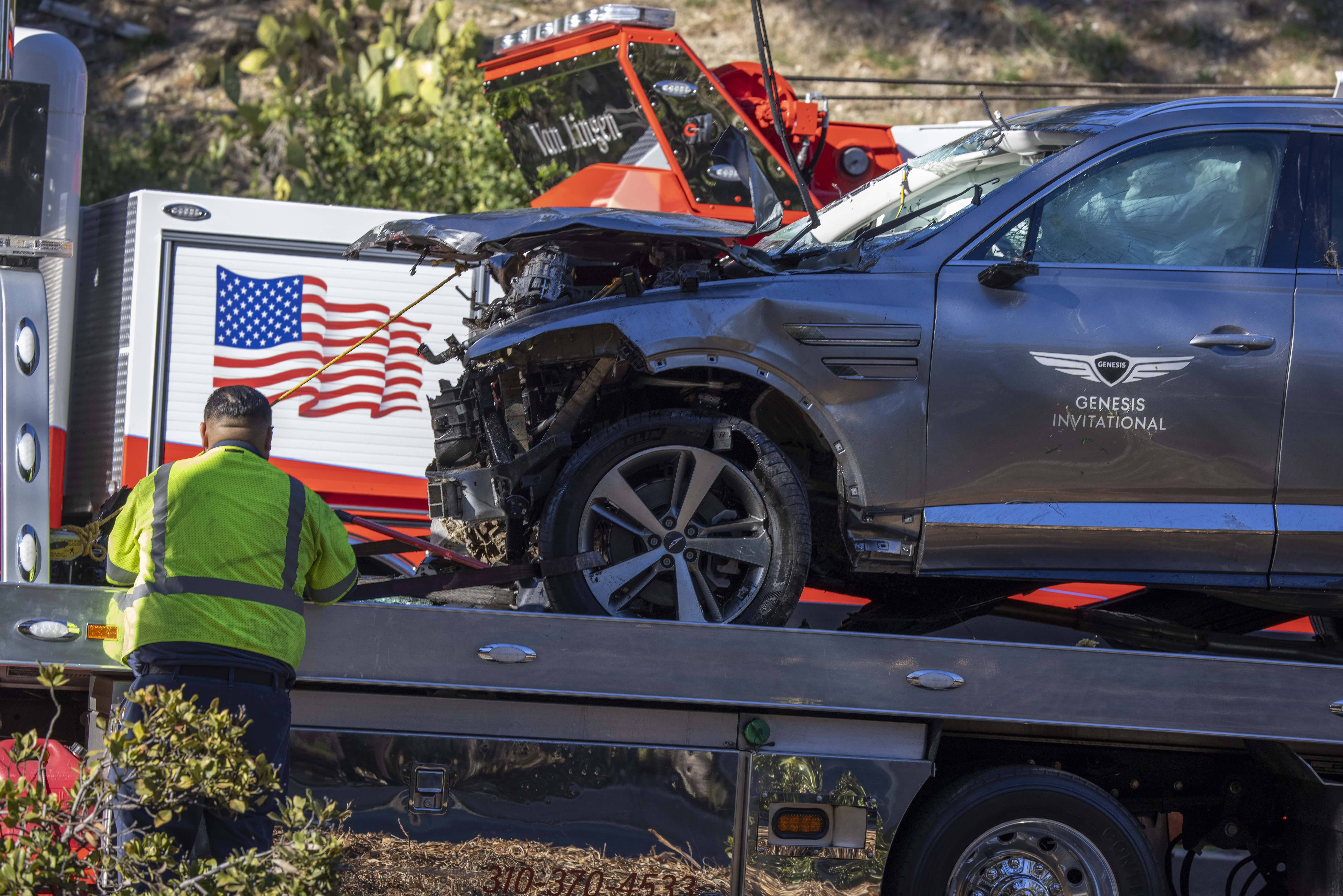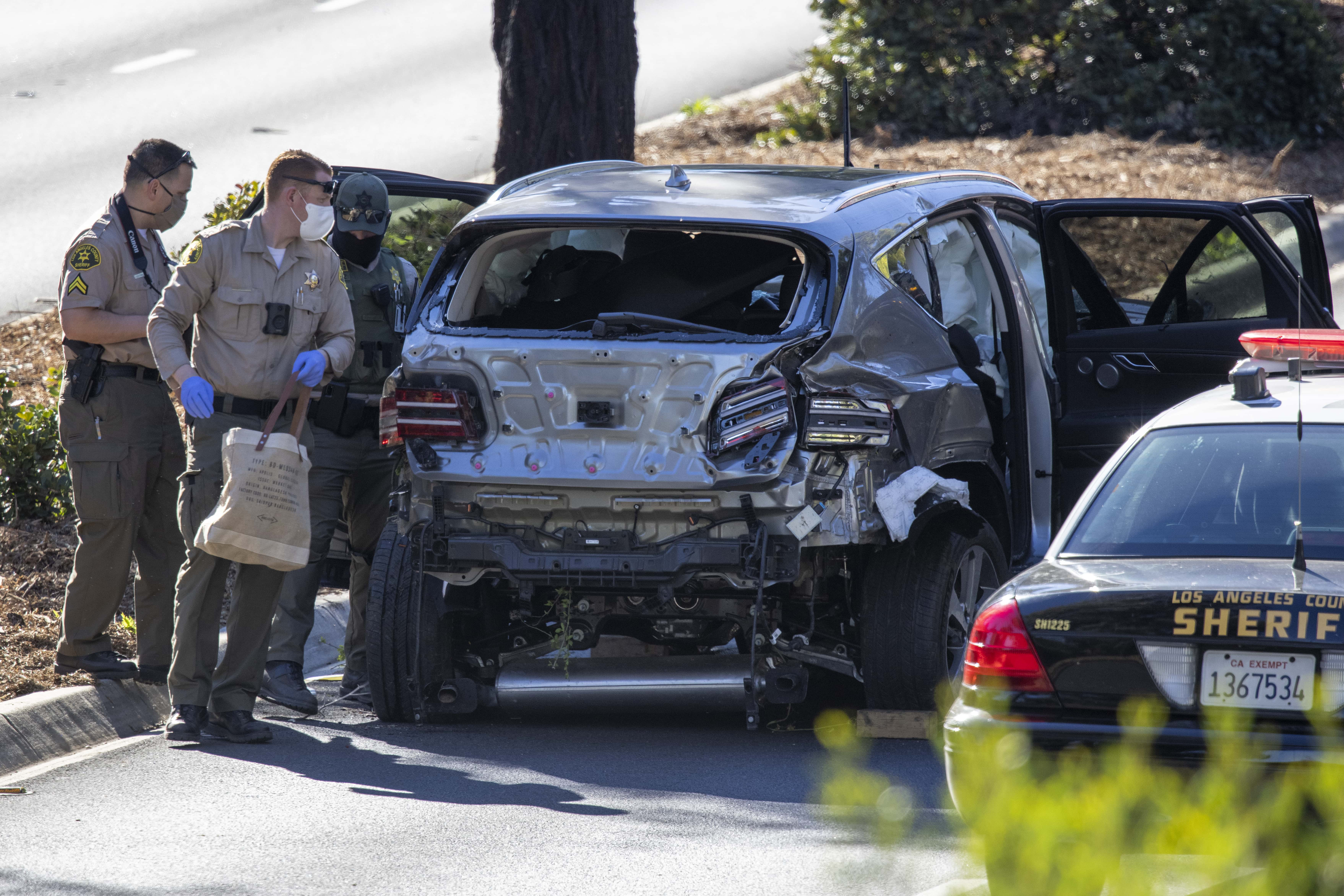Tiger Woods was probably asleep at wheel before SUV crash, say experts: 'He was very late in hitting brakes'

Tiger Woods' crash on February 23 that left him with a smashed right leg and extensive injuries to his right foot could have stemmed from the golfer not paying attention to the road, according to three forensic crash experts. Woods had to undergo multiple leg surgeries following the roll-over crash as he was driving to reach his scheduled destination at the Riviera Golf Course in Los Angeles.
According to USA Today, three forensic experts believe that the evidence does not indicate that the famed golfer lost control of his vehicle because of excessive speed on a curved downhill road that is reportedly known for speeding cars. The street, running through Rolling Hills Estates and Rancho Palos Verdes, along Hawthorne Boulevard sees accidents regularly, according to one Claudia Gamio, who heard the noise from the crash.
RELATED ARTICLES

Forensic experts arrived at the theory that Woods may have been asleep at the car given the way his vehicle appeared to be going straight even as the road curved right. They also stated that Wood's injuries to his right leg and foot indicated that he applied the brakes late into the collision sequence.
Jonathan Cherney, a former detective who is now a consultant who works on car accident analyses and a regular expert witness in court cases, told USA Today, "To me, this is like a classic case of falling asleep behind the wheel because the road curves and his vehicle goes straight." He said, "It’s a drift off the road, almost like he was either unconscious, suffering from a medical episode, or fell asleep and didn’t wake up until he was off the road and that’s where the brake application came in." Cherney also said that he did not see any evidence of "any steering input" that would have indicated that Woods tried to avoid the accident.
Felix Lee, an accident reconstruction expert who is part of the Expert Institute told the publication that since Woods' vehicle had anti-lock brakes, "you wouldn't necessarily see tire marks" even if Woods were to slam the brakes prior to hitting the curb. Lee also cited the vehicle's unchanging direction on entering the curve and going directly into the median, saying, "My feeling is that speed wasn’t that much of an issue. It was just some kind of inattention that caused the curb strike.”

Rami Hashish, principal at the National Biomechanics Institute, which analyzes the cause of accidents, concurred with the finding, citing that Woods' lack of steering input suggested a "very delayed response." He said, "It was suggesting he wasn't paying attention at all."
Hashish also said that had Woods traveled at an excessive speed, the damage to the vehicle and the golfer himself could have been much greater. He said, "You can walk away with a broken leg from 45 to 50 miles per hour. If you’re hitting 60, 65 and you’re hitting a stationary object, your likelihood of death increases exponentially.” Hashish also said that if Woods was traveling at 80 miles per hour, "he wouldn't be having an open fracture in this leg," instead, "he'd be dead."
Los Angeles County Sheriff Alex Villanueva said that the crash was "purely an accident" and that there was no evidence of impairment or medication involved. However, the forensic experts found it puzzling that Villanueva had determined it to be an accident without examining the vehicle's "black box" computer. The sheriff's department told USA Today that the investigation into the crash was ongoing.










